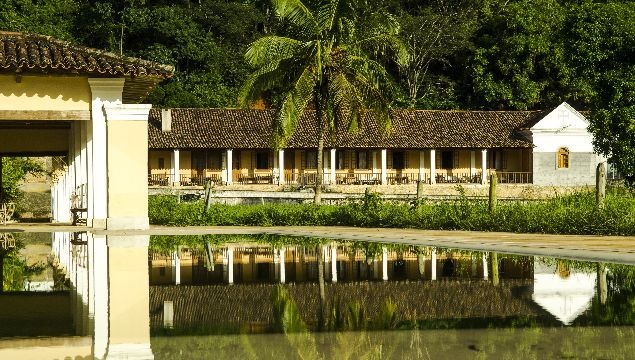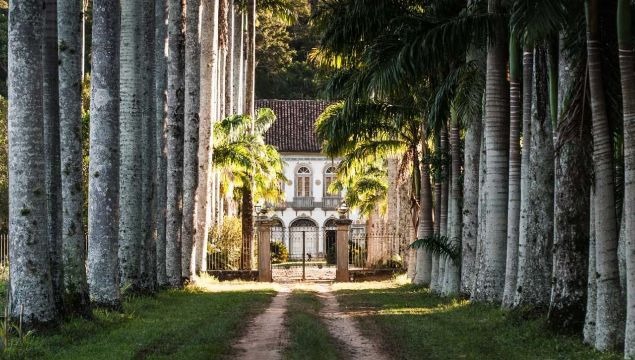Latest Photo Galleries
Brazilian Markets
17h17 Bovespa |
+1,50% | 126.526 |
16h43 Gold |
0,00% | 117 |
17h00 Dollar |
-0,93% | 5,1156 |
16h30 Euro |
+0,49% | 2,65250 |
ADVERTISING
Visitors Pick what they Eat at Historic Farms in the Coffee Valley
05/17/2018 - 13h31
Advertising
BRUNO LEE
FROM SÃO PAULO
Physically, the Coffee Valley covers an area of 15 municipalities in southern Rio de Janeiro State. In time, it exists somewhere between the 19th century and today.
Echoes from the earlier period peak during fruit production season in the region and are the main stamp of local tourism. Today, out of more than 147 historic farms from the Coffee Valley - based on records from the State Institute for Cultural Heritage -, 35 are open for visitation.
In varying states of preservation, their owners allow a glimpse into how the beneficiation process for the coffee bean worked - on some farms, visitors are received by guides wearing clothing and adopting a visage from the past.
| Divulgação | ||
 |
||
| Alliança, in the Coffee Valley |
In the River of Flowers (Rio das Flores) Municipality [180 km from the Rio de Janeiro Capital] at the Paradise (Paraízo) Farm, which dates from 1845, structures, equipment, furniture and household utensils from the period are kept, including a wood stove which is still in use by the owners who also still live there. The visit, which concludes with a colonial meal, costs R$ 70 (US$ 19) per person.
A few years younger, the Alliance (Alliança) [finished in 1963], located in the municipality of Barra do Piraí [110 km from Rio de Janeiro), also preserves the machinery used in the 19th century for processing the coffee.
| Igor Alecsander/Divulgação | ||
 |
||
| Paraizo, in the Coffee Valley |
In addition to this, it performs a role as a "living farm", in the words of its owner, Argentine Sra Josefina Durini.
Part of the land is used for growing organics - from sweet potato to pore-garlic (alho-poró). Visitors are guided through the cultivated areas and learn about the characteristics of herb species: tiririca (sedge), santa-maria, capoeraba.
Then comes the time for picking. Tourists can collect produce and take it home or see part of it used in the preparation of lunch, which is served at the farm itself - depending on the category level of the tour.
Translated by LLOYD HARDER



